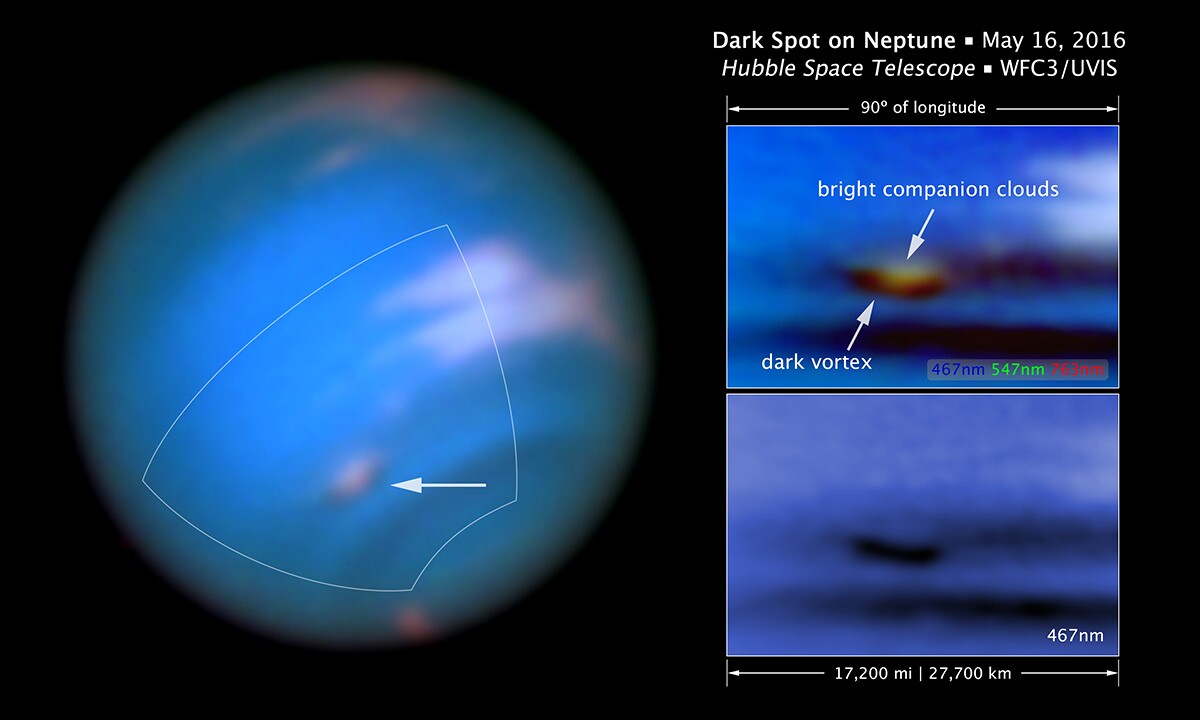If Neptune seems a bit blemished of late, it's because NASA has confirmed that a dark spot has shown up in its bluish atmosphere. Observations by the Hubble Space Telescope taken in May show that a dark vortex has appeared in the southern hemisphere. This high-pressure system is accompanied by brighter "companion clouds" and is the first such dark spot to be seen this century.
According to NASA, the dark spot was first detected by amateur astronomers and the Keck Observatory in Hawaii, in July 2015. Though the spot couldn't be seen directly, its bright companion clouds were detected. Because earthbound telescopes lack the necessary resolution, the Hubble was brought in as part of its Outer Planet Atmospheres Legacy (OPAL) program, which regularly re-examines the outer Solar System. In September 2015, the space telescope observed a dark spot, which was confirmed by a second observation in May. The new data aided in the generation of high-resolution maps.
The structure of the vortex is similar to those seen by the unmanned Voyager 2 probe during its 1989 flyby of Neptune, and by Hubble in 1994. While the spot is a high-pressure vortex, the companion clouds are believed to be ambient air forced up by the vortex, where methane freezes into reflective ice crystals. As such spots form, they vary in stability as they wander in latitude before breaking up.

"Dark vortices coast through the atmosphere like huge, lens-shaped gaseous mountains," says Mike Wong, who led the team that analyzed the Hubble data. "And the companion clouds are similar to so-called orographic clouds that appear as pancake-shaped features lingering over mountains on Earth."
The space agency says that astronomers are interested in the Neptunian spots because they provide insights into the structure and dynamics of the surrounding atmosphere.
Source: NASA








